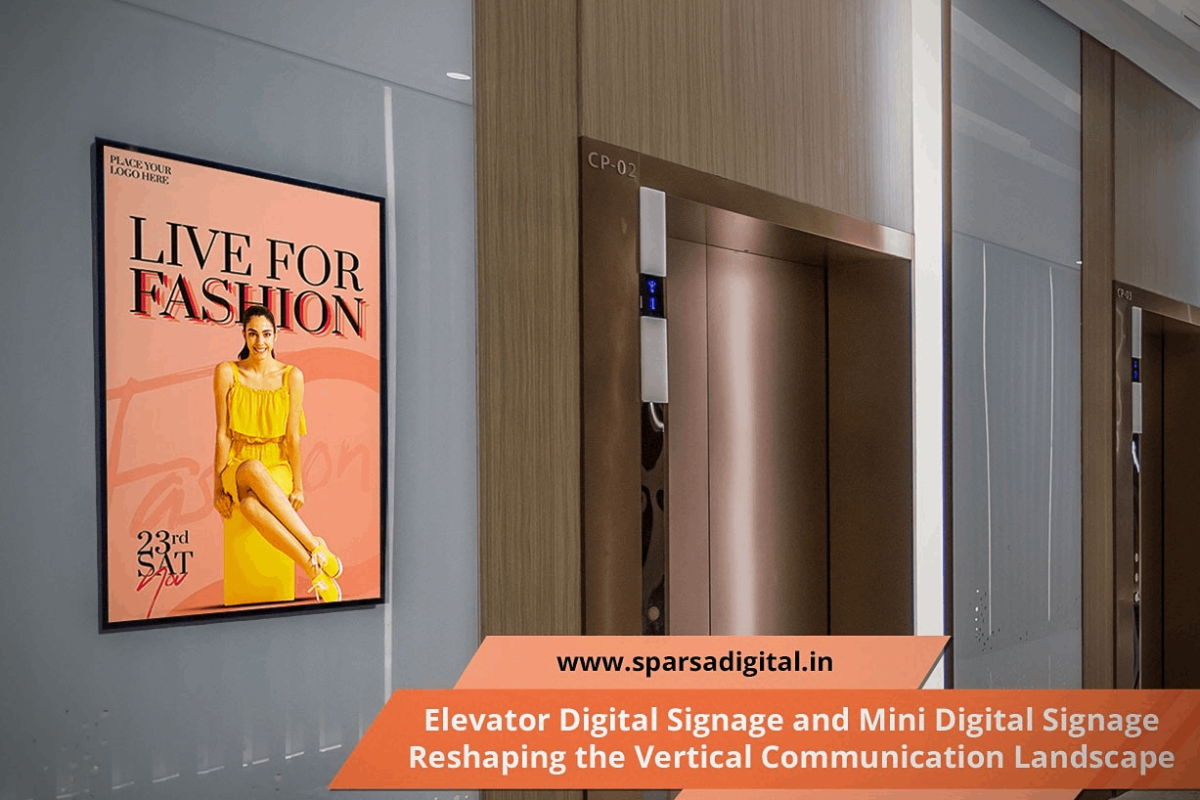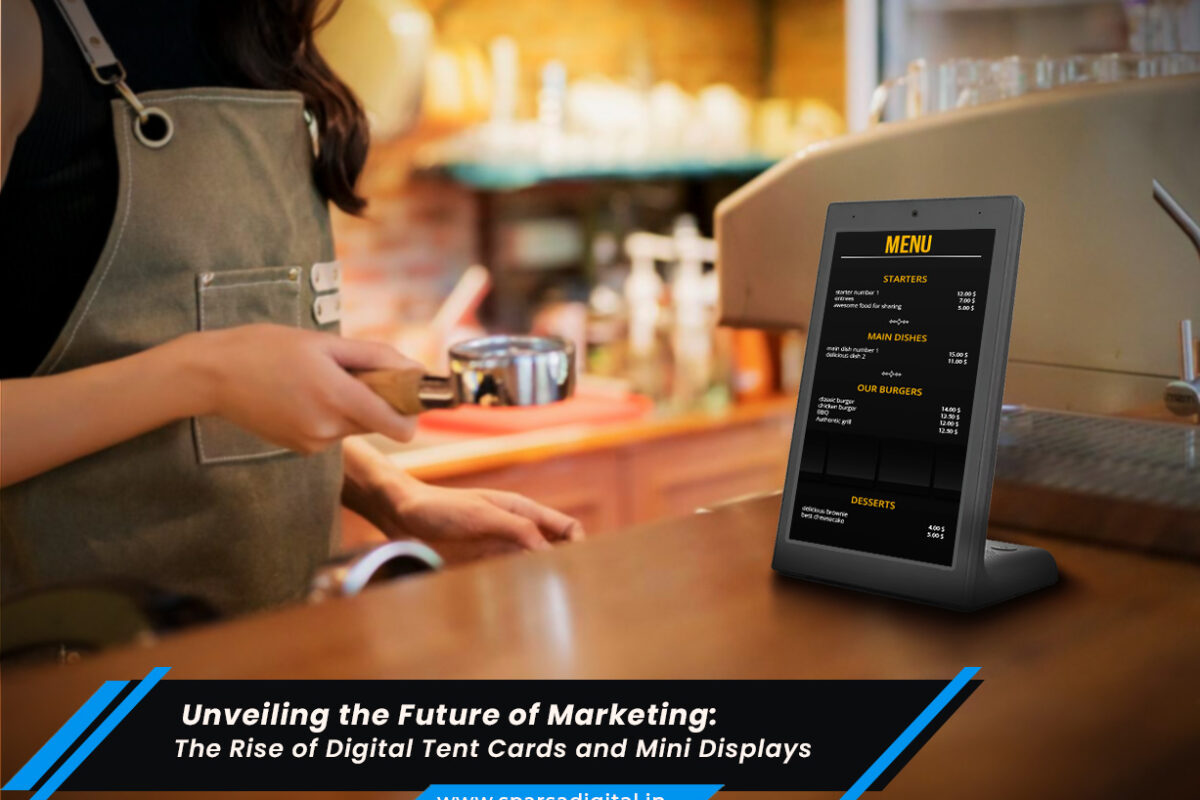In the fast-paced, technologically driven world we live in, digital signage has become a powerful tool for communication. Elevator digital signage and mini digital signage represent innovative applications of this technology, transforming the way we receive information in confined spaces and on a smaller scale. This blog aims to explore the evolution, benefits, diverse applications, and future potential of elevator and mini digital signage, delving into the impact they have on user experience, advertising, and information dissemination.
The Evolution of Digital Signage
The inception of digital signage can be traced back to the early days of computing when displays evolved from simple text and graphics to more sophisticated multimedia presentations. The integration of digital content in public spaces gained momentum with the advent of high-definition screens and improved display technologies. Digital signage quickly migrated from traditional billboards to dynamic, interactive displays, ushering in a new era of communication.
Understanding Elevator Digital Signage
Elevator digital signage represents a unique and effective means of communication within the confined spaces of elevators. Traditionally, elevators were considered dead spaces in terms of advertising and information dissemination. However, the integration of digital signage has turned elevators into engaging communication channels.
a. Purpose and Placement:
Elevator digital signage serves multiple purposes, including advertising, information sharing, and entertainment. Placed strategically within elevators, these displays captivate a captive audience during the short duration of their journey, making effective use of what was previously an overlooked space.
b. Dynamic Content:
Elevator digital signage allows for the display of dynamic content, ranging from advertisements to news updates and building announcements. The ability to tailor content to specific demographics and time frames enhances the impact of the messages conveyed.
c. Interactive Features:
Some elevator digital signage systems incorporate touch or motion sensors, enabling interactive experiences for users. This feature can be particularly engaging, offering a unique and memorable way for brands to connect with their audience.
Applications of Elevator Digital Signage
a. Advertising and Branding:
Elevator digital signage provides a valuable platform for advertisers to reach a targeted audience. Whether promoting products, services, or upcoming events, these displays offer a captive audience with high visibility.
b. Building Information:
Elevator digital signage is often used to relay important building information such as emergency procedures, maintenance schedules, and facility updates. This ensures that occupants are well-informed while using the elevator.
c. Entertainment and Engagement:
Elevator rides can be transformed into engaging experiences through the integration of entertaining content. This could include short videos, trivia, or interactive games, making the journey more enjoyable for passengers.
The Advantages of Elevator Digital Signage
a. High Visibility:
Elevator digital signage benefits from its unique placement, guaranteeing high visibility and attention from a captive audience. Users are more likely to engage with content displayed within the confined space of an elevator.
b. Targeted Messaging:
The ability to tailor content to specific demographics, time of day, or building events allows for targeted messaging. This ensures that the information displayed is relevant and resonates with the audience.
c. Space Optimization:
Elevator digital signage optimizes otherwise unused space within elevators, maximizing the potential for communication and advertising. This is especially valuable in densely populated urban areas where elevators are a common mode of transportation.
d. Ease of Content Management:
Modern elevator digital signage systems come equipped with user-friendly content management systems, allowing for easy updates and scheduling. This flexibility ensures that content remains relevant and timely.
Mini Digital Signage: A Compact Revolution
While elevator digital signage utilizes confined spaces effectively, mini digital signage takes the concept further by bringing dynamic displays to a smaller scale. Mini digital signage typically involves compact screens or displays strategically placed in areas where larger screens may not be practical.
a. Small Footprint:
Mini digital signage is characterized by its small footprint, making it suitable for areas with limited space. These displays can be seamlessly integrated into various environments, including retail spaces, waiting areas, and public transportation.
b. Point-of-Sale Applications:
In retail environments, mini digital signage finds applications at point-of-sale locations. These displays can showcase promotions, product information, and advertisements, influencing purchasing decisions at the point of interaction with customers.
c. Wayfinding and Information Points:
Mini digital signage is effective for providing wayfinding information in public spaces. Placed strategically, these displays guide individuals through complex environments, enhancing the overall visitor experience in malls, airports, and large facilities.
d. Interactive Kiosks:
Some mini digital signage installations take the form of interactive kiosks, allowing users to access information, browse products, or even place orders. This interactive element enhances user engagement and provides a modern and efficient means of communication.
The Advantages of Mini Digital Signage
a. Flexibility in Placement:
Mini digital signage offers flexibility in terms of placement, allowing for strategic positioning in areas where larger displays may be impractical. This adaptability ensures that information is conveyed effectively in diverse environments.
b. Enhanced Engagement:
Due to their compact nature, mini digital signage often attracts more focused attention. Users are more likely to engage with content displayed on smaller screens in close proximity, leading to increased message retention.
c. Cost-Effectiveness:
The smaller size of mini digital signage can translate into cost savings, both in terms of initial investment and ongoing operational expenses. These displays are often more budget-friendly while still delivering impactful communication.
d. Scalability:
Mini digital signage solutions are scalable, allowing businesses to deploy multiple displays across various locations. This scalability ensures that information reaches a wider audience, whether in a retail chain or a public transportation network.
Synchronized Strategies: Elevator and Mini Digital Signage Working Together
Integrating both elevator and mini digital signage into a comprehensive communication strategy can amplify the impact of visual messaging. The synchronized use of these displays allows for a cohesive and immersive experience, enhancing brand recall and information retention.
a. Complementary Messaging:
Elevator digital signage can be utilized for broader, attention-grabbing messages, while mini digital signage can provide more detailed or specific information in closer proximity. Together, they create a harmonious communication ecosystem.
b. Brand Consistency:
Employing consistent branding and messaging across both elevator and mini digital signage ensures a unified brand image. This consistency contributes to brand recall and strengthens the overall impact of the communication strategy.
c. User Journey Enhancement:
By strategically placing mini digital signage at key touch points along a user’s journey, businesses can guide individuals through spaces more effectively. Elevator digital signage can serve as a starting point, creating anticipation for what users will encounter in other areas with mini displays.
Conclusion
Elevator digital signage and mini digital signage have transcended traditional communication boundaries, transforming confined spaces and smaller environments into powerful channels for information, advertising, and engagement. From the evolution of digital signage to the unique applications and advantages of these specific implementations, the journey of visual communication has reached new heights.
As we look towards the future, the continued innovation in technology promises to bring about even more dynamic and immersive experiences. The synchronization of elevator and mini digital signage, coupled with advancements such as AR integration and smart sensors, will undoubtedly redefine the landscape of visual communication. Elevating communication through innovation, these digital signage solutions will continue to shape user experiences, influence consumer behavior, and contribute to the ever-evolving tapestry of modern communication.


